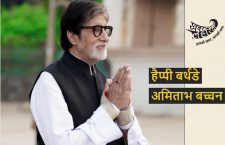Soaring fuel prices are back to become the stuff of everyone’s nightmares. Prices have touched an all-time high with petrol being retailed at 80.38 rupees per litre and diesel at 72.51 rupees per litre in the capital city, while political parties scramble to gain political mileage by hurling accusations at each other from plush-backed armchairs in air-conditioned rooms. And while memes abound on which would be the first to touch the 100 mark – fuel or INR against USD – it is, as always, the people who survive in places far away from Delhi who continue to bear the brunt.
In Lalitpur, it’s been a brutal September, with farmers being one of the populations who are the worst hit. The range of activities they need to perform in order to continue farming – from plying tractors, to running irrigation pumps and tilling their fields – all need fuel. As Sumer Singh, a weary farmer tells us, “First of all, the biggest problem we face is with respect to irrigation. We need fuel to be able to pump underground water and water the fields. Where irrigation related activities could earlier be done in 500 rupees worth of diesel, now the same amount of diesel is costing us up to 700 rupees. And, the second problem is that of tractors. Many of us do not have tractors of our own, we need to hire them. But where they could be hired at the rate of 500-600 rupees per hour earlier, now we have to pay up to 800 rupees for the same thing.”
The rising fuel prices become part of the vicious cycle in turn affecting rents, vegetable sales, yield output, and transport – for a small farmer who rents tractors for the fields and then trucks for the ferrying-to-markets, this is a crippling reality, and one that affects daily sustenance. In Lalitpur, things already appear to have reached a point where small farmers are seriously considering selling off their lands to be able to make ends meet and feed their families. Ashok Kumar woefully relates how exorbitant fuel prices are driving most farmers to look for alternate means of livelihood, with many migrating to cities to look for jobs as day labourers.
Small businessmen and sellers are affected as well, such as Suresh Sahu, a fruit and vegetable vendor, “Earlier, we could go to the villages to sell our wares and be back in just 100 rupees. But the same thing costs us 150 to175 rupees now. Our earnings have fallen from 300-400 rupees to merely 200 to 250 rupees.”
In such a scenario, it is not surprising to see the extreme flak the incumbent government is receiving from all ends. Opposition parties are resorting to their latest favourite tool of bharat bandh whereas farmers, small businessmen, and fishermen are staging indefinite strikes in different parts of the country. However, to get a clearer picture of the government’s role in all of this, we must understand how fuel prices are determined in the first place. There are five major factors which influence the price of fuel in the country – international cost of crude oil, exchange rate of the U.S. dollar to the rupee, excise duty (levied by the central government), VAT (levied by the respective state governments), and the dealer commission paid by oil companies to fuel pump owners. While the first two are beyond the control of the government, the government is expected to adjust excise duty and VAT so as to offset the effect of rising crude oil prices worldwide. Here, it is important to note that excessive excuse duty and VAT have consistently been the major factor in inflating the price of fuel in the country. For instance, as per the Indian Oil Corporation website, taking the example of petrol prices in Delhi, more than 35 rupees out of the retail price of 82.03 rupees is attributable to excise duty and VAT alone. Despite this, the government continues to maintain its non-committal stance and blame volatility of international crude oil prices for the surging fuel prices in the country.
On the other side of the fuel fury, we met with local petrol sellers and dealers, who are not happy with the turn of events either. Faced with dwindling sales and falling revenues, they are almost as helpless as their customers. “We also face difficulties due to the soaring prices, it is not as if we are reaping profits out of this. Customers haggle and fight with us, but our hands are tied – what can we do? Our own revenues are falling, they are already down by 10-15% till now,” says Rishi Tiwari, a petrol dealer from Lalitpur. As one attendant sums it up, ‘Yeh maar hai lagatar. (We’re taking a continuous beating).’
This Khabar Lahariya article first appeared on Firstpost.

